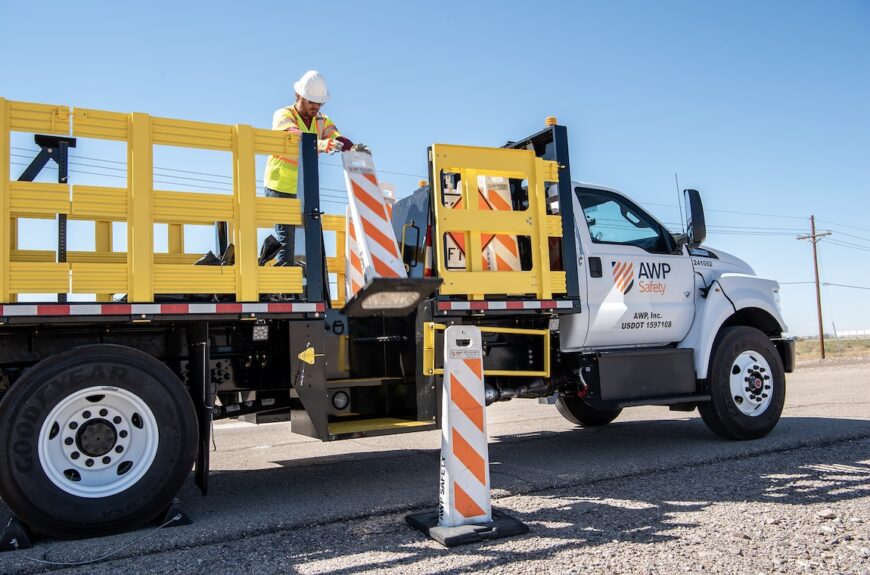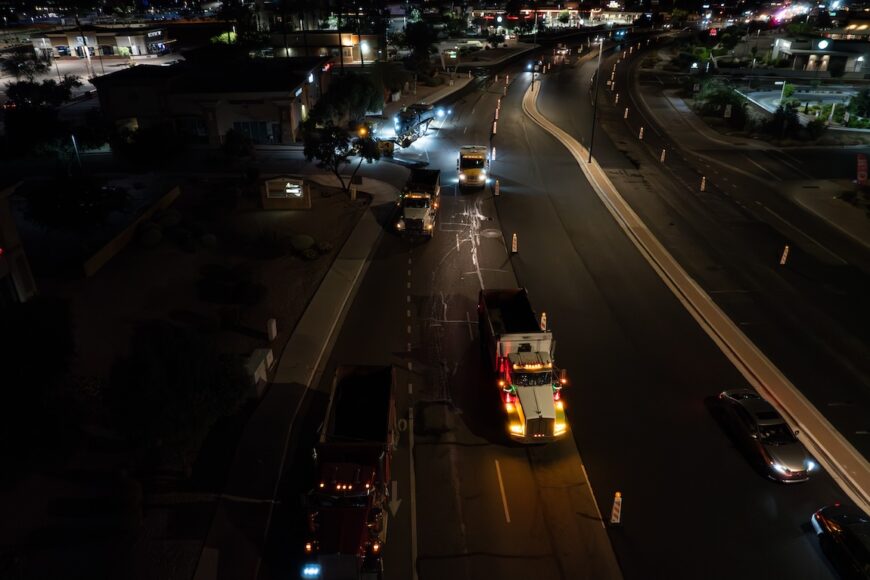
Elevating Safety for Nighttime Utility and Broadband Line Crossings
Coast to coast, AWP Safety supports utility and broadband companies to keep worksites safe and productive — from rural roads to major interstate highways. Line crossings, where power lines or fiber cables are installed over the roadway, are often required for major infrastructure upgrades and expansions. These projects can be complex and challenging to execute in congested, high-traffic areas during daytime hours. In these instances, AWP Safety supports customers by delivering end-to-end service and customized traffic control plans for nighttime line crossings.
The Ins and Outs of Texas Line Crossings
Day or night, line crossings require expert coordination of traffic control plans, worksite setup, signage, and equipment to keep work crews and the public safe. Setups can depend on how a line crossing is conducted. For example, in Texas, line crossings in urban areas are often done with the help of a helicopter. In other areas, they are completed using cranes and machine pulls to install lines above the highway. Sometimes, line crews manually pull the lines with the help of boom trucks and hand tools.
Before work begins, AWP Safety experts survey the location and compare it to standardized traffic control plans provided by the Texas Department of Transportation (TxDOT). From there, AWP Safety customizes plans based on the unique and unexpected characteristics of each location, such as unmapped roads, other nearby active work zones, missing signage, and more. Whatever the project requires, it can be easier to complete line crossings at night.
“Nighttime line crossings allow us to avoid daytime traffic congestion which lowers safety risks for everyone,” explains Lito Gurrero, area manager for AWP Safety’s Central Division in Bryan, Texas. “Working at night also mitigates the effects of extreme summer temperatures on work crews.”
Keeping the Lone Star State Connected and Safe
AWP Safety collaborates with a wide spectrum of customers in Texas, like broadband provider Metronet and electric utility provider Bryan Texas Utilities, to safely execute nighttime line crossings that, by law, start around 9 p.m. and end at 5 a.m.
AJ Dear, area manager for South Texas in Austin, notes that while traffic is lighter during these hours, motorists don’t always expect to encounter an active worksite in the middle of the night. “Work is happening just as bars, restaurants and other entertainment venues are closing,” he says. “Drivers are tired, may be distracted or under the influence, and might have a harder time seeing at night. We need to take extra precautions.”
Those precautions include installing message boards far in advance to alert the community to nighttime work. AWP Safety also partners with law enforcement officers (LEOs) to provide additional support. Strategically placed police cruisers add high-visibility lights where roads are closed or work is ahead, and LEOs assist with redirecting motorists who accidentally enter the worksite. Many nighttime line crossings also require the use of multiple trailer mounted attenuators (TMAs) – crash cushions mounted to the rear of safety trucks that follow and protect work crews in case of a collision in the work zone. TMAs provide an extra barrier between motorists and work crews to save lives. Dear adds that AWP Safety is the only traffic control provider in Texas with the capability to deploy 20+ TMAs at once. In some cases, AWP Safety provides rolling slowdowns, where large trucks slow and control traffic to clear a section of highway for work without bringing traffic to a complete stop.
“AWP Safety has exceptional capability, scale and expertise customers won’t find anywhere else,” Dear explains. “Safety is in our DNA. We look out for everybody and are prepared for anything.”
This all adds up to safe nighttime line crossings that help broadband and utility companies deliver essential services to communities. Learn more about AWP Safety’s line crossing expertise, from daytime aerial line crossings to connecting solar installations within existing power infrastructure.
Ready to connect on your next project? Contact us to request a quote.



